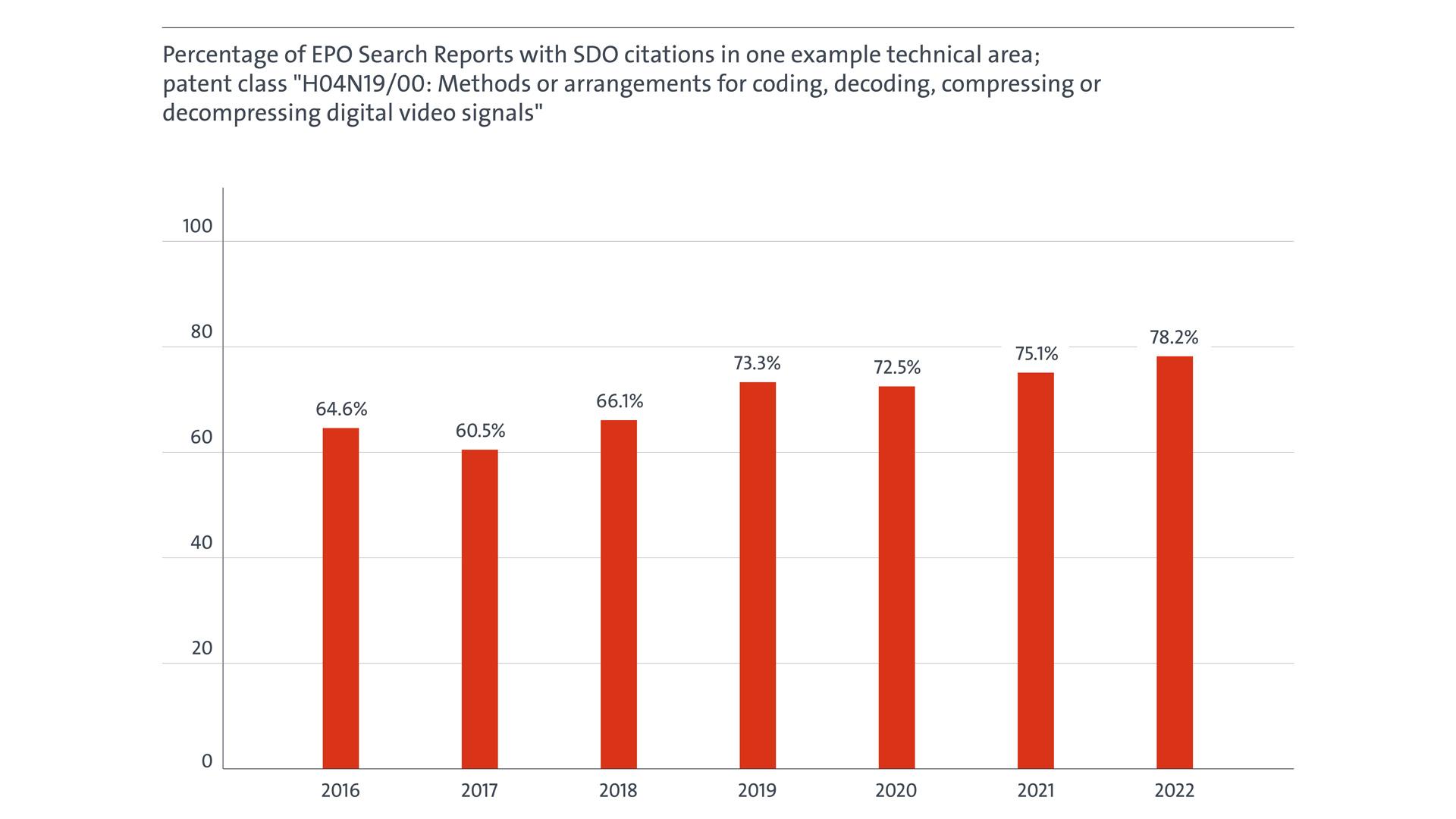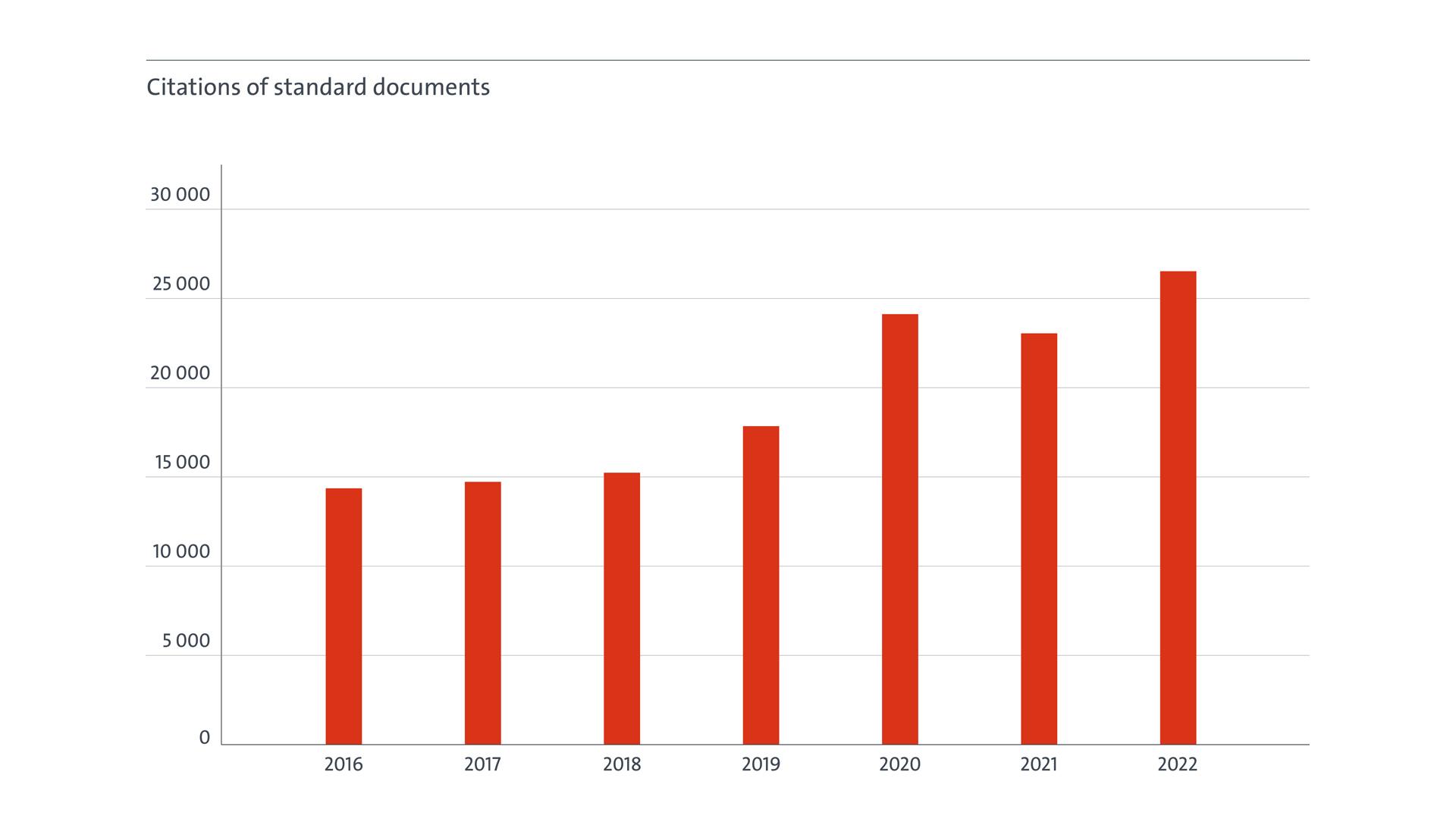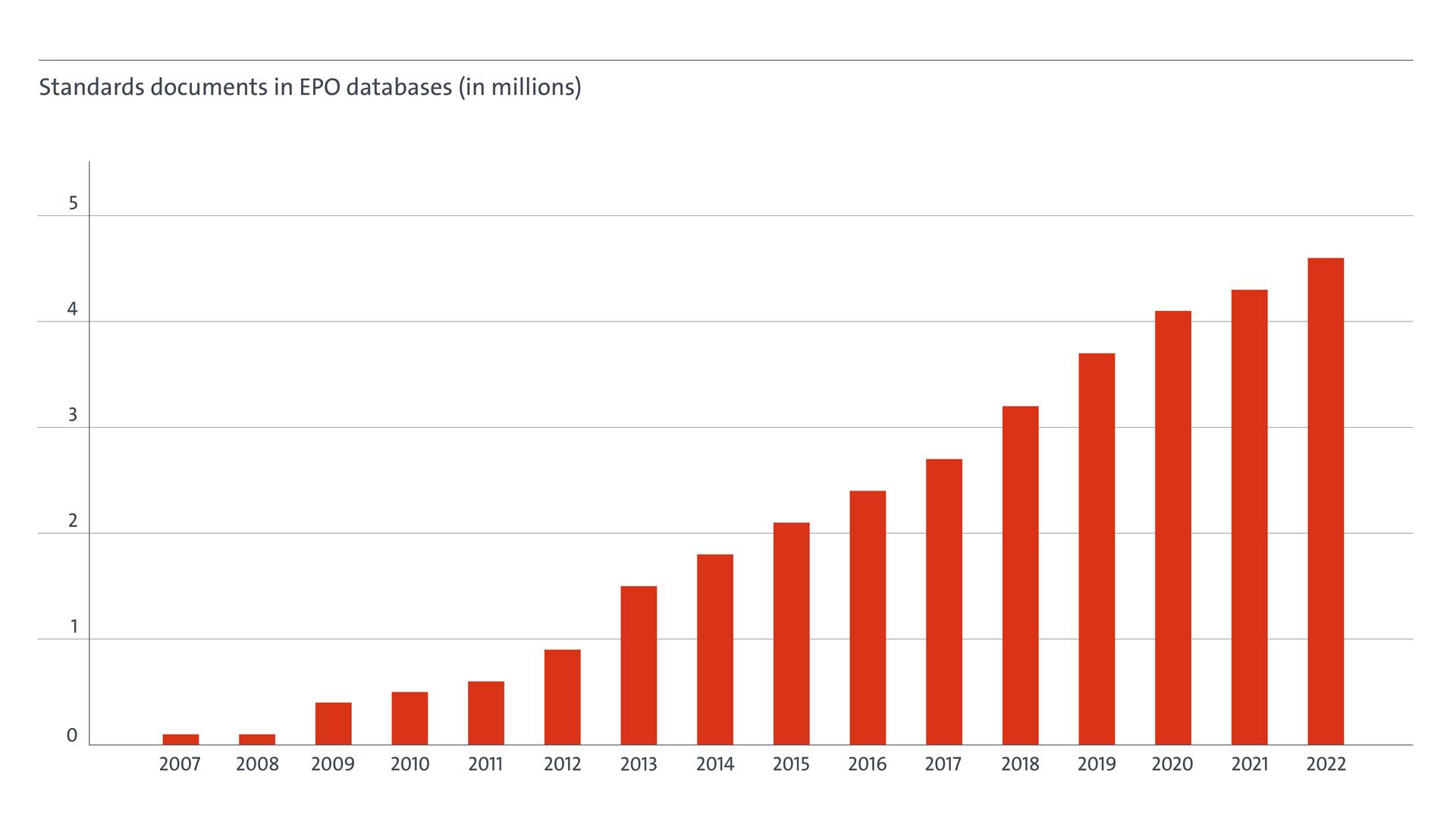Patents and standards
Last updated: 20.8.2021
Wouldn't it be annoying if android phones only communicated with other android phones? And iPhones only with other iPhones? Thanks to standards, mobile phones from any manufacturer can interact, across any provider and any country. Standards ensure interoperability in a vast range of technologies, many more than you would imagine.
Standards - a set of requirements for a specific item, material, component, system or service, or a particular method or procedure - are developed to ensure compatibility and interoperability of components, products and services. They are a central pillar of the modern "knowledge economy" and promote the dissemination of new technologies.
In today's digital economy, where standards provide interoperability and the pace of development is unprecedented, the standards often integrate new and patented technologies. This leads to interactions between the two systems.
- Patent quality and standards
-
The EPO's primary contribution is its high patent quality, which ensures that patent rights are only granted for technologies that are new and inventive. This ensures that standards (or any other technology area) are not encumbered by inappropriate patent rights. The EPO's quality is highlighted in the annual Intellectual Asset Management (IAM) survey on patent quality, where the EPO has repeatedly taken first place.
High patent quality is dependent on a high quality search, which requires efficient, searchable access to as much relevant prior art as possible. In many ICT fields, standardisation documentation has proved to present highly relevant prior art, in particular in relation to applications for technologies revealed in standards development discussions. In key technology fields, standards documents are cited in around two thirds of EPO search reports.

Standards as state of the art
Patents shall be granted for any inventions, in all fields of technology, provided that they are new, involve an inventive step and are susceptible of industrial application, according to Article 52 of the European Patent Convention. An invention is considered to be new if it does not form part of the state of the art, including everything made public in a written or oral description, by use, or in any other way, before the date of filing of the European patent application.
Standards documents typically qualify as state of the art unless they are subject to a clearly established and well respected confidentiality obligation. To be considered new, the patent applications claiming these technologies must be filed before disclosure in the standards development process.
Additionally, an invention shall be considered as involving an inventive step if, having regard to the state of the art, it is not obvious to a person skilled in the art (Art.56 EPC). Previously disclosed standards documentation may also be used to determine what is considered "obvious" to the person skilled in the art.

The EPC Guidelines for Examination (EPC GL G-IV-7.6) provide more detailed information on the use of standards documents in the patent examination procedure.
- Access to documentation
-
EPO patent examiners can consult comprehensive literature collections from standardisation organisations including:
European Telecommunications Standards Institute (ETSI) 3rd Generation Partnership Project (3GPP) Internet Engineering Task Force (IETF) International Telecommunication Union (ITU)In addition to the final standards issued by the SDOs, the EPO databases also include the technical disclosures submitted in the course of the standardisation process. These documents are normally published before the final standard is agreed upon and are thus very relevant for the patent granting process.
The Office continually monitors developments to identify additional SDO collections.

- Institute of Electrical and Electronics Engineers Standards Association (IEEE-SA)
- Digital Video Broadcasting Project (DVB)
- Open Mobile Alliance (OMA)
- oneM2M - Standards for M2M and the Internet of Things
- International Electrotechnical Commission (IEC)
- Association of Radio Industries and Business (ARIB)
- Patent transparency around standards
-
Other key elements in ensuring compatibility between the patent and standardisation systems are the general obligations for standards development participants to declare IPRs that might be relevant to the implementation of the standard (so-called Standards Essential Patents or SEPs), and to offer licenses of these IPRs on a FRAND basis (“Fair, Reasonable And Non-Discriminatory”).
Another of the EPO's major contributions is the easy access to patent documents. The EPO has the largest collection of patent information in the world, with over 130 million documents from more than 100 jurisdictions. These are searchable online in the EPO's free-to-use public databases (Espacenet), using inventor and applicant attributes, keywords and the Cooperative Patent Classification's (CPC's) 260 000 technology codes.
So in addition to the SEPs declared at standard development organisations (SDOs), implementers and the public in general can find relevant patents, irrespective of whether or not they have been declared as such.
Through its unique collection, the EPO is also able to put together comprehensive "patent families", gathering patent applications filed around the world for an invention, as well as collating legal status information from over 50 patent offices, allowing you to assess whether these patents are still in force.
To improve transparency around SEPs, the EPO provides a link to its online patent information services from the European Telecommunications Standards Institute (ETSI) Intellectual Property Rights (IPR) declaration database.
As a result, it is possible to link direct to a patent document in Espacenet from the ETSI database and to view its content and scope. Additionally, the ETSI database automatically downloads patent family information (to indicate how widely a patent has been filed) and INPADOC legal status data using the EPO's Open Patent Services (OPS), making it possible to ascertain the legal status of each patent family member in the ETSI IPR database itself.
- Standards and the Fourth Industrial Revolution
-
The EPO is closely monitoring "Fourth Industrial Revolution" developments both in Europe and internationally. The Internet of Things (IoT) is expected to connect some 29 billion devices by 2023 in complex interconnected systems, with new standards providing the essential connectivity and interoperability in almost every industry.
Representatives from the EPO attend key conferences on standards and patents around the world, as well as monitoring developments in other digitally-related patenting issues. The EPO also participates as an observer in the IPR Committees of SDOs such as ETSI, ITU, and IEEE-SA.
The EPO is continually liaising with other potential SDOs to optimise its approach.
Inventors setting standards

Franz Amtmann & Philippe Maugars
The secure, contactless communication provided by Near Field Communication (NFC) is not only simplifying purchases, but also makes it possible to buy train or bus tickets while boarding, share photos and contacts with others easily, and clear an airplane boarding pass with a flick of the wrist.

Ajay V. Bhatt and team
One of the most ubiquitous computer advances since the computer processor, Universal Serial Bus (USB) greatly simplified a previous maze of competing plug designs, allowing effortless plug-and-play functionality and simultaneous connection of many devices.

Erik Dahlman and team
The 3G networks that first enabled true broadband mobile Internet access are now being superseded by LTE networks, which offer download and upload speeds many times greater than those achievable via decade-old 3G technology.